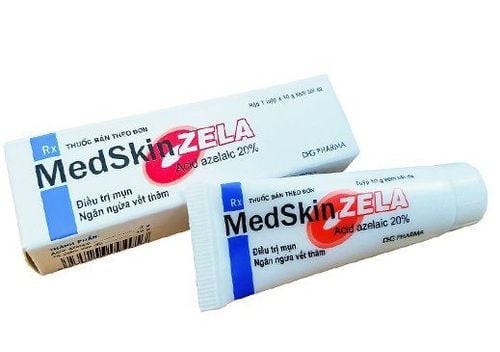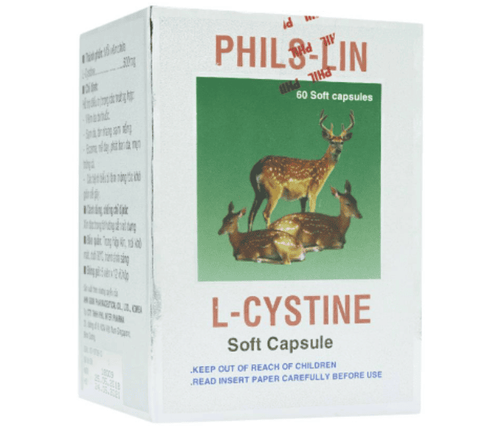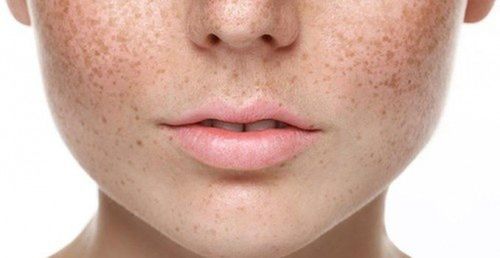This is an automatically translated article.
The article was professionally consulted with Doctor Obstetrician and Gynecologist - Department of Obstetrics and Gynecology - Vinmec Hai Phong International General Hospital.
Women entering their 30s will clearly notice signs of aging and one of them is dark patches appearing on the skin. Besides genetic factors, the two biggest causes of skin pigmentation are external environmental influences and internal hormonal disturbances.
1. What is endocrine melasma?
Estrogen or female hormone is a synthesis of 3 substances: estrone, estradiol and estriol and is denoted E1, E2, E3. Estrogen is known to be a miracle hormone, playing an important role in women. This hormone helps a woman's body regulate the sex system, hair, skin, body curves and control the hormone MSH - the hormone that stimulates the production of melanin under the skin. Entering the aging age, estrogen in a woman's body is produced more slowly than before, causing hormonal imbalance, and this is the cause of the increase in melanin, leading to hormonal pigmentation.
Endocrine melasma, also known as deep melasma, is pigmented areas that grow concentrated in round nodules on the surface of the skin with roots deep into the layers of skin structure, mainly the basement membrane of the normal layer. affected, sometimes deep into the dermis.
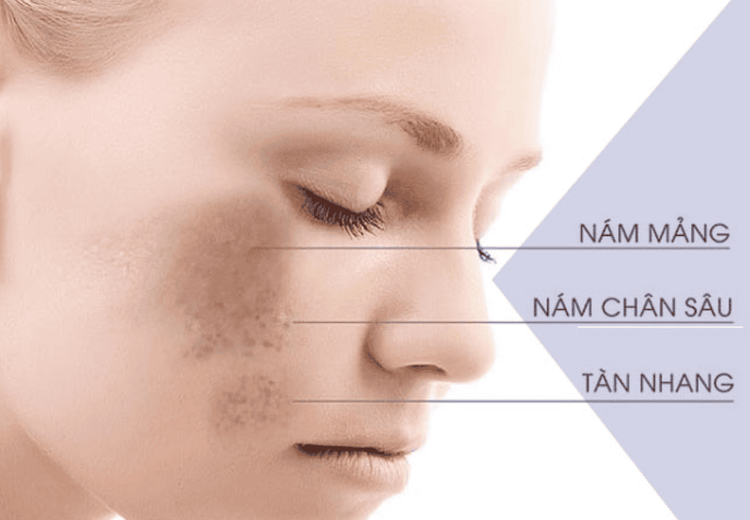
2. Causes of endocrine melasma
Postpartum women, pre-menopause, people who use oral contraceptives or antibiotics continuously will often have hormonal melasma. Cause:
Postpartum women: During pregnancy, the amount of estrogen in a woman's body increases rapidly to protect the fetus. After giving birth, estrogen suddenly declines, leading to endocrine disorders; Women using oral contraceptives: Progestins in oral contraceptives not only cause water retention but also contribute significantly to stimulating skin pigmentation. When these spots are exposed to the sun, they become darker and more widespread; Stress, fatigue: Psychological and emotional factors have a great influence on the health and beauty of the skin. The hormone estrogen is secreted by the brain, which directs the ovaries to secrete, so when the brain is in a state of stress, the activity of the ovaries will also be affected, causing hormonal changes and leading to melasma.

3. Manifestations of endocrine melasma
Endocrine melasma appears on the skin often in the form of small, pale yellow spots, which proliferate very quickly if not treated promptly. Endocrine melasma usually appears mainly in:
Both cheeks; Temporal region; Forehead; Nose and nostrils. The degree of melasma expressed on the surface of the skin is a mirror that reflects the hormonal disorder inside your body.
It is also possible to detect changes in female hormones through the following manifestations:
Menstrual cycle changes, irregular and less over time; The ovaries, cervix, and vagina become smaller, and the glands secrete less mucus. At the same time, there is a burning sensation during sexual intercourse; There are signs of neurological disorders such as anxiety, irritability, irritability, heart palpitations, mood swings... The skin begins to show signs of aging: loss of elasticity. elastic, dark, wrinkled...
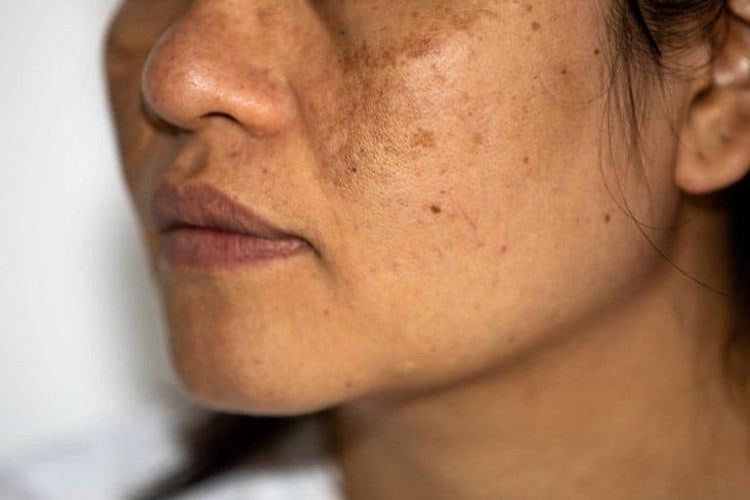
4. Treatments
Women after the age of 30, the production of female hormone hormones in the body begins to decrease gradually. However, there are still measures that can slow down the aging process and maintain health and beauty by keeping hormones in the body in balance. Measures should be maintained and applied are:
Keep mentally comfortable: When psychological stress is prolonged, the amount of estrogen will increase, causing hormonal disturbances. Therefore, keep a relaxed spirit, a positive attitude to life, spend a lot of time resting, relaxing, exercising to improve the effectiveness of treatment; Nutritional supplements: Ensure a variety of meals, supplement with hormone-balanced products such as soybeans, soy products (tofu, soy milk), carrots, potatoes.. .omega - 3 from salmon, sea fish... at least 2 times/week; Use exogenous estrogen supplements: Healthy fats, omega-3 are indispensable ingredients in the daily menu if you want to quickly improve hormonal melasma. The foods you should add include: coconut oil, avocado, grass-fed butter and wild salmon (fat); fish, flaxseeds, chia seeds, walnuts, grass-fed products (omega-3); limited or no use of vegetable oils from sunflower, corn, canola, soybean and peanut (omega-6); Use sunscreen: Sunlight often contains UV rays which is one of the factors that stimulate the production of melanin. Should choose a sunscreen with SPF 30+ and use it regularly even when not going out. Say no to caffeine: Caffeine has the effect of helping you stay awake and focused, but it is also one of the agents that cause cardiac arrhythmias, affect the digestive process and disturb the endocrine system. The caffeine-containing drinks to avoid are coffee, tea, cocoa,... Get enough sleep: Enough and deep sleep will balance hormones, build new energy sources, help the body recover after a day. long working day, work. Hormones in your body work according to a predetermined schedule, so when you lack sleep, your natural circadian rhythm will be upset, contributing to hormone imbalance.
Please dial HOTLINE for more information or register for an appointment HERE. Download MyVinmec app to make appointments faster and to manage your bookings easily.






